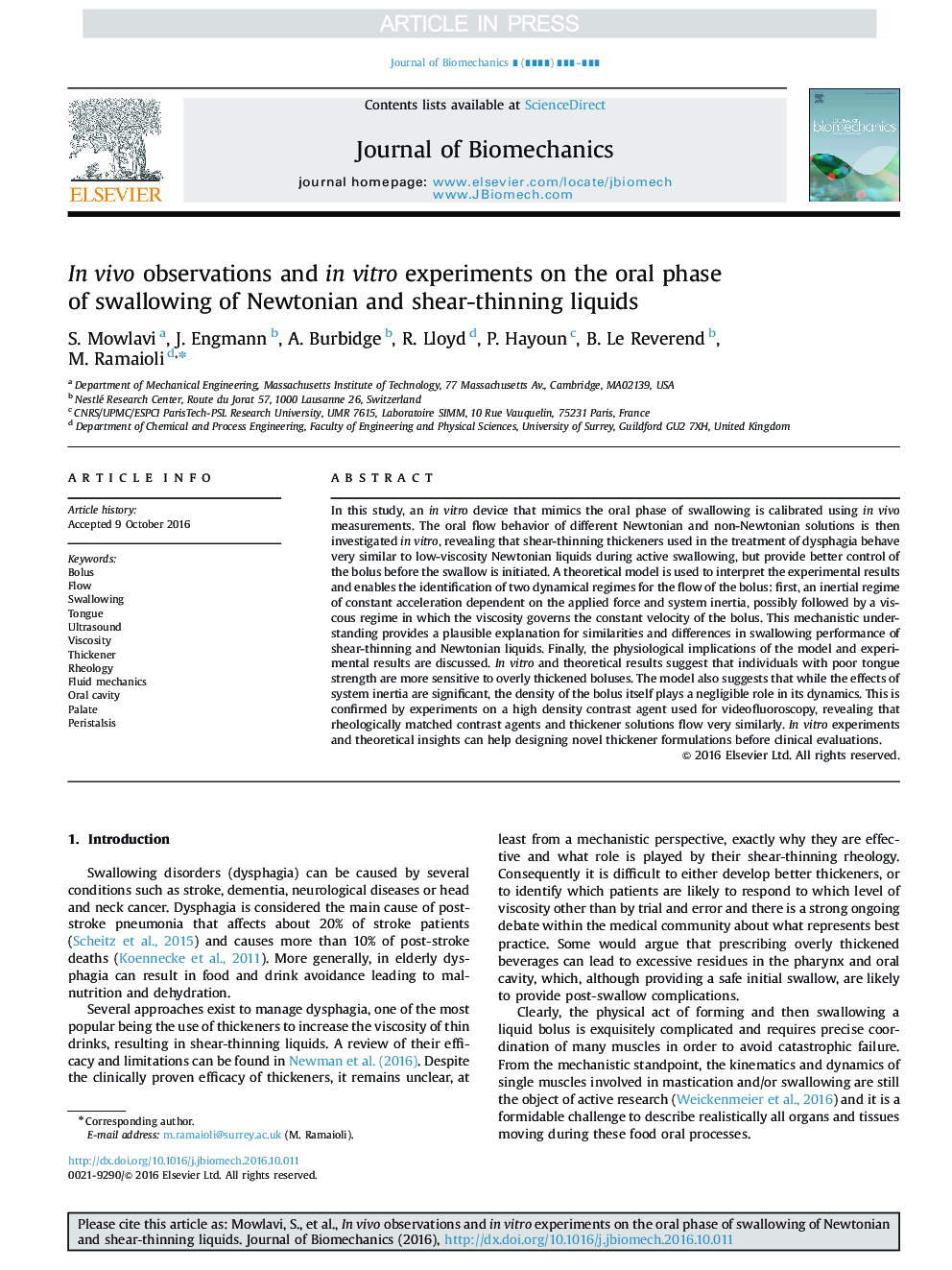| Article ID | Journal | Published Year | Pages | File Type |
|---|---|---|---|---|
| 5032275 | Journal of Biomechanics | 2016 | 8 Pages |
Abstract
In this study, an in vitro device that mimics the oral phase of swallowing is calibrated using in vivo measurements. The oral flow behavior of different Newtonian and non-Newtonian solutions is then investigated in vitro, revealing that shear-thinning thickeners used in the treatment of dysphagia behave very similar to low-viscosity Newtonian liquids during active swallowing, but provide better control of the bolus before the swallow is initiated. A theoretical model is used to interpret the experimental results and enables the identification of two dynamical regimes for the flow of the bolus: first, an inertial regime of constant acceleration dependent on the applied force and system inertia, possibly followed by a viscous regime in which the viscosity governs the constant velocity of the bolus. This mechanistic understanding provides a plausible explanation for similarities and differences in swallowing performance of shear-thinning and Newtonian liquids. Finally, the physiological implications of the model and experimental results are discussed. In vitro and theoretical results suggest that individuals with poor tongue strength are more sensitive to overly thickened boluses. The model also suggests that while the effects of system inertia are significant, the density of the bolus itself plays a negligible role in its dynamics. This is confirmed by experiments on a high density contrast agent used for videofluoroscopy, revealing that rheologically matched contrast agents and thickener solutions flow very similarly. In vitro experiments and theoretical insights can help designing novel thickener formulations before clinical evaluations.
Keywords
Related Topics
Physical Sciences and Engineering
Engineering
Biomedical Engineering
Authors
S. Mowlavi, J. Engmann, A. Burbidge, R. Lloyd, P. Hayoun, B. Le Reverend, M. Ramaioli,
